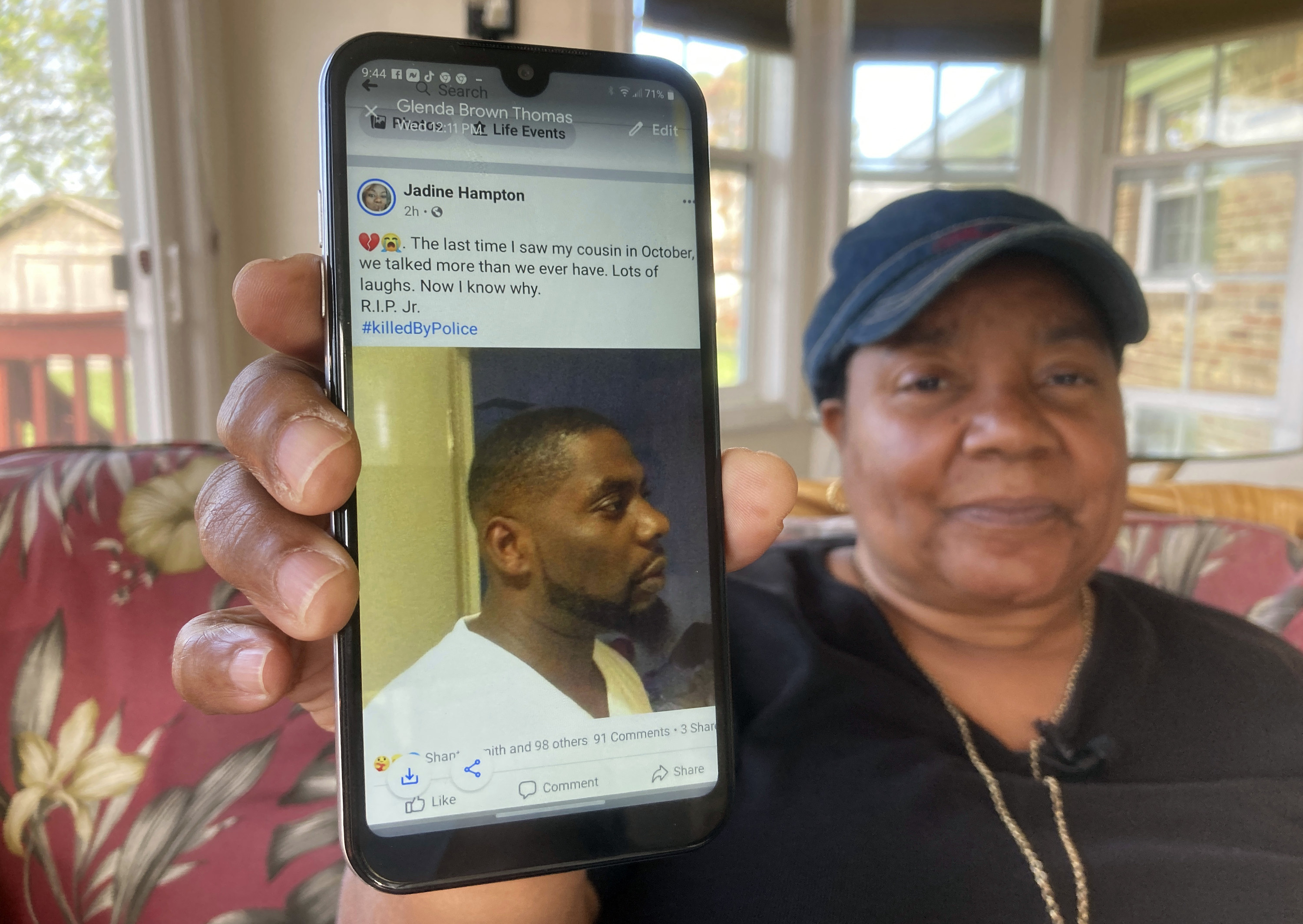
A North Carolina judge denied a request Wednesday for the sheriff's footage showing deputies fatally shooting Andrew Brown Jr. to be immediately released to the public.
Brown was shot and killed in his car outside his home in Elizabeth City, North Carolina, on April 21 as deputies from the Pasquotank County Sheriff's Office attempted to carry out a search warrant.
Since his death, officials including the governor, the mayor, and the sheriff have called for the full bodycam footage of his death to be released, which can only be done by court order in North Carolina.
Wednesday's court hearing confirmed that there are four body camera videos and one dashcam — the first time the number of recordings was mentioned publicly.
But Superior Court Judge Jeffrey Foster denied a request by over 20 media organizations for the footage to be released, ruling that the media was not a valid party to request the video.
Releasing the videos, Judge Foster said, could threaten the investigation into the killing, as well as the safety of the officers in the footage.
“The release at this time would create a serious threat to the fair, impartial, and orderly administration of justice,” he said.
However, Brown's son, Khalil Ferebee, had also requested access to the videos. The judge decided that the videos would be released to Ferebee, immediate family members, and one attorney.
The judge ruled Ferebee would have access to the videos within 10 days but that the faces of officers in the videos would be blurred out.
The full videos will remain out of public view for 30 to 45 days, the judge decided, "pending completion of the investigation."
Brown's family, who have seen 20 seconds of one bodycam video, say that it shows an "execution" by officers as Brown attempted to drive away.
Brown family attorney Wayne Kendall told reporters outside Wednesday's court hearing they considered the judge's decision a "partial victory."

In court on Wednesday, Pasquotank County District Attorney Andrew Womble had asked for the delay of 30 days.
He argued that he wanted North Carolina State Bureau of Investigation officials to complete their investigation before its release, claiming that it would affect potential jurors if charges were later laid against the officers involved.
"You cannot swing a skunk in front of a group of people and then ask them not to smell it," said Womble.
State Bureau of Investigation officials said Wednesday in a statement, published by a reporter from 13NewsNow, that they "defer to the local authorities and the courts" regarding any video release and that they support "transparency to the greatest extent possible."

For the first time on Wednesday, the public heard law enforcement argue that they only began shooting after Brown hit officers with his car.
“As it backs up, it does make contact with law enforcement officers,” said Womble, according to the Associated Press. “The next movement of the car is forward. It is in the direction of law enforcement and makes contact with law enforcement. It is then, and only then, that you hear shots.”
That differs from the narrative of Brown's family and their lawyers, who say that the footage they've seen shows Brown was trying to avoid getting shot by officers and backed his car out to ensure he didn't hit them.
The judge had viewed the footage prior to Wednesday's hearing.
Seven deputies have been put on administrative leave following Brown's death and three deputies resigned.
"The officers are very distraught over what happened, they feel for the family of Andrew Brown… but we believe the shooting was justified," said Herscal Williams, a lawyer who appeared in Wednesday's hearing without naming his clients but appeared to be representing the deputies involved in the shooting.
Williams argued that there was "no compelling public interest" to release the video and that its release would affect the deputies' ability to have a fair and impartial trial if charges were laid.
Pasquotank County Sheriff Tommy Wooten has said he supports the release of the footage.
An independent autopsy organized by the family of Brown found on Tuesday that he was shot five times by police: four times in his right arm and a fatal shot to the back of his head.
Mike Tadych, a lawyer representing over 20 media organizations, had petitioned for the court to release the video.
"The eyes of the world are upon us," said Tadych.
He mentioned how bystanders filmed George Floyd's death, which law enforcement originally recorded as a medical incident, and that those videos helped the public understand what had actually happened.
Former Minneapolis police officer Derek Chauvin was found guilty of the murder of Floyd in a trial that concluded just days before Brown's death.
"It's important to see how law enforcement’s interactions with the public have an effect on people," said Tadych.
